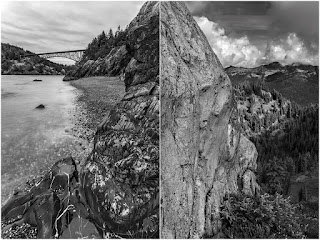"The rush and pressure of modern life are a form, perhaps the most common form, of its innate violence. To allow oneself to be carried away by a multitude of conflicting concerns, to surrender to too many projects, to want to help everyone in everything is to succumb to violence. The frenzy of the activist neutralizes one’s work for peace. It destroys one’s inner capacity of peace. It destroys the fruitfulness of one’s work because it kills the roots of inner wisdom which make work fruitful."
For regular followers of my blog (I hope at least a few of you remain!), I apologize for the recent dearth - heck, a veritable void - of posts and images. While legitimate reasons may (oh, so slightly) outweigh embarrassed half-baked excuses, the real truth(s) are revealed in Merton's quote: the dearth has as much to do with surrendering to too many (non photography related) projects as it does to my - and, everyone else's - ongoing battle to maintain some semblance of "inner peace" that - without which - it is impossible to sustain the creative process.
I have always been a photographer of the heart; meaning, that I when I sense my left brain working - thinking, processing, analyzing - I put my camera back in its bag and turn my attention to other matters. I have also long embraced my heart's need for a deep contemplative quiet before my muse awakens. Unfortunately, such states have been increasingly hard to come by; what, with an unceasing pandemic, growing unrest in my country (a day away from a profoundly important election as I type these words), and spillage of day-time anxiety over what the next few months and year will bring over into dreams (and nightmares). And so, in turn, my camera sits patiently in its bag, and my blog wallows in its dearth of new images. But, alas, a ray of hope...
Merton's quote is taken from an essay ("The Modern-Day Desert") that appears in a truly extraordinary book,
Notes on Silence, written and edited by Cassidy Hall and Patrick Shen. This book - discovered by chance as I was looking for something "completely unrelated" on the web a few weeks ago - has been a blessing; it is, at once, a spiritual salve, a place of solace, and a portal to precisely what my soul needs to help stumble its way through the muck and morass of this dark time. The book is also as much a metaphoric portal to otherworldly spiritual realms as it is a direct one to the mother project from which it was spawned; namely, an equally remarkable (and multiple award-winning film) called
In Pursuit of Silence.
Both film and book are joyously mystical meditations on the ineffability of silence. Not in a pedantic "let's listen to sounds of silence" sort of way (a topic well covered by other documentaries), but as revelatory / participatory pointers-to / glimpses-of what lies beyond the silence. Words, images, film stills, quotations, transcripts (in the book) - and, yes, "sounds" (and the lack of them) in the film - are brilliantly combined, mutated, and transformed into a new transcendent meta-language that hints of truths that pure silence is itself but a waystation to. You will meet myriad musicians, artists, mystics, philosophers, monastics, and theologians, and learn about the infinite variety of silences that permeate existence.
Of course, the inner serenity I thought I had lost - and which I most certainly, and inexcusably, took for granted - was never gone! But it took this film and its accompanying
Notes on Silence to remind me what "inner serenity" looks like.
Seeing silence is akin to meeting yourself for the very first time.
I encourage anyone whose artistic muse dwells in inner silence to first view the film, and then order a copy of the book to keep by your bedside reading table. It is a treasure trove of timeless wisdom.
PS/Postscript. The image at the top of this post was taken mid-Oct at the
Peaks of Otter Lake (along the
Blue Ridge Parkway in VA). Apart from a few forgettable "snapshots" around the house and garden, this image is among the first "real" photographs I've taken in months. My muse may not have fully awakened, but I can see vestiges of an "inner serenity" that
Notes on Silence reminded me never really left.







